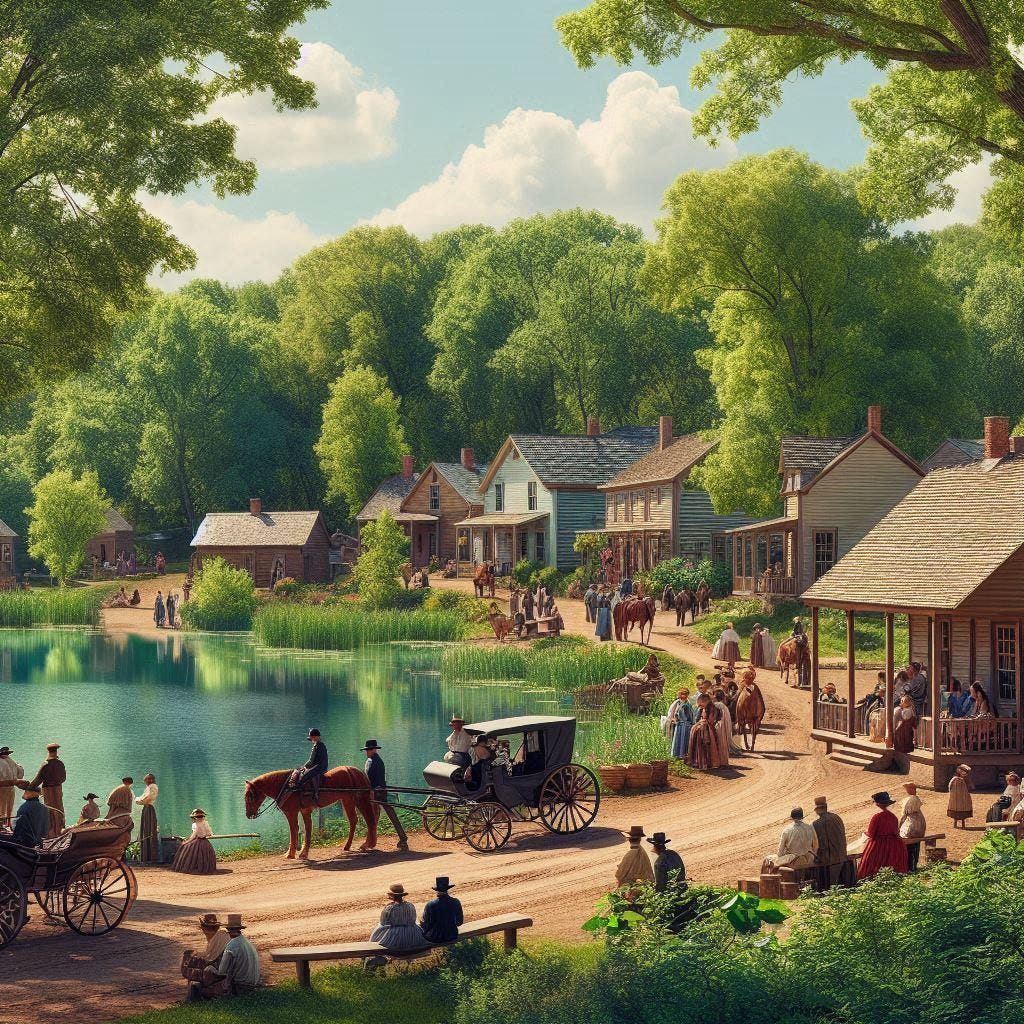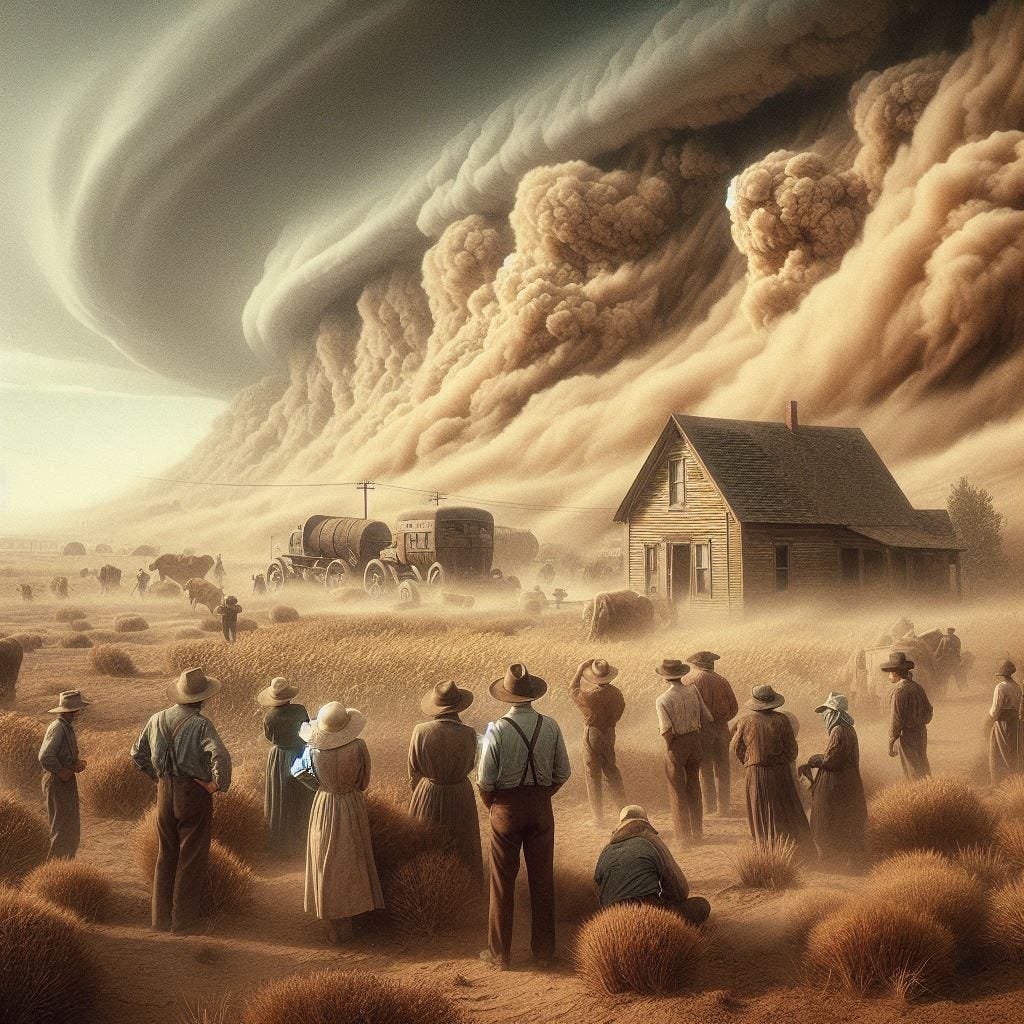“Those who cannot remember the past are condemned to repeat it.” — Spanish-American philosopher George Santayana, 1905
1858 — Minnesota Statehood
image generated using Bing Image Creator
Minnesota became the 32nd State on this date in 1858 (no rhyme intended). It is called “The Land of 10,000 Lakes,” but Alaska has 300 times that many, although it has “only” seven times as many square miles. Minnesota does lay claim to part of the largest of the Great Lakes, though (Lake Superior).
What Minnesota can brag about, though, is that it’s the source of the Mississippi River, which starts as a trickle from Lake Itasca in the northern part of the State.
From when it became a U.S. Territory in 1849 to Statehood in 1858, Minnesota’s population grew 25-fold, from 6,000 to 150,000. Many of those who moved in during the 19th Century were Scandinavians.
Among those who made Minnesota their home during that century was the Ingalls family, living near Plum Creek and in Walnut Grove in the 1870s.
Questions: Have you read any of Laura Ingalls Wilder’s books? If yes, have you read On the Banks of Plum Creek? Have you ever been to Minnesota? What connection do the Los Angeles Lakers have with Minnesota?
1934 — Massive Dust Storm From the Plains
image generated using Bing Image Creator
public domain image from wikimedia commons
The following is what I wrote about The Dust Bowl in my book Still Casting Shadows: A Shared Mosaic of U.S. History — Volume 2: 1914-2006:
Dust storms on the plains increased in frequency and intensity this year. Their were four dust storms in January, seven in February, the same number in March, and then fourteen in April—one of them lasting twelve hours. There ended up being a total of 56 for the year. This was “nothing,” though, in com parison with what was to come—there would be 134 in 1937. Even sooner than that, a duster so bad that the day on which it took place came to be known as “Black Sunday” was to take place in 1935.
Even in this early stage of dust storms on the southern plains, though, conditions were more than bad enough. One man, summoned to the hospital as his pregnant wife’s labor pains intensified, got his car stuck in a drift on the way. He walked two miles through the storm to a farmhouse. His car was eventually extricated with the aid of the farmer and his tractor. The man continued his journey to see his wife and baby when, visibility being what it was (nearly nil), he entered a corner too fast and tipped his car over. At first, he thought he was pinned in the wreckage, but was finally able to free himself, crawl up and out through the passenger-side window, pull the car back over onto its wheels, and continue his sojourn. He walked into the delivery room, bruised and battered and bleeding from the accident, eyelids mud-clogged, fingers stained with oil, just in time to see his wife give birth to their firstborn.
Doubtless he felt the travails he had been through to get there had been amply compensated by the joy of seeing his wife and newborn. However, he would endure a similar ordeal a few years later, but this time it would culminate tragically: The same child would die from dust pneumonia. This time, the father was not able to make it to the hospital until an hour after his child had died.
On this date in 1934, the Great Plains lost millions of tons of topsoil in a massive dust storm. The recipients of that lighter-than-air dirt were places as far away as Georgia, Massachusetts, New York, and even ships in the Atlantic 300 miles from shore.
The cause of the sudden dust migration was over-farming of the land, which had originally been prairie, by wheat growers. World War 1 sped up the raking and stripping of the land which, when coupled with a severe drought, brought about the conditions for a transfer of soil through the air.
This was by no means the only dust storm. It was one of many, although this one was especially dramatic and traumatic. As a result of these serial dust storms, thousands of families from Arkansas, Colorado, Kansas, New Mexico, Oklahoma, and Texas pulled up stakes and headed to California.
Questions: Have you read Timothy Egan’s nonfiction book The Worst Hard Time: The Untold Story of Those Who Survived the Great American Dust Bowl? Have you read John Steinbeck’s novel The Grapes of Wrath?
Read about “The Secret Lives of Kids” here.









